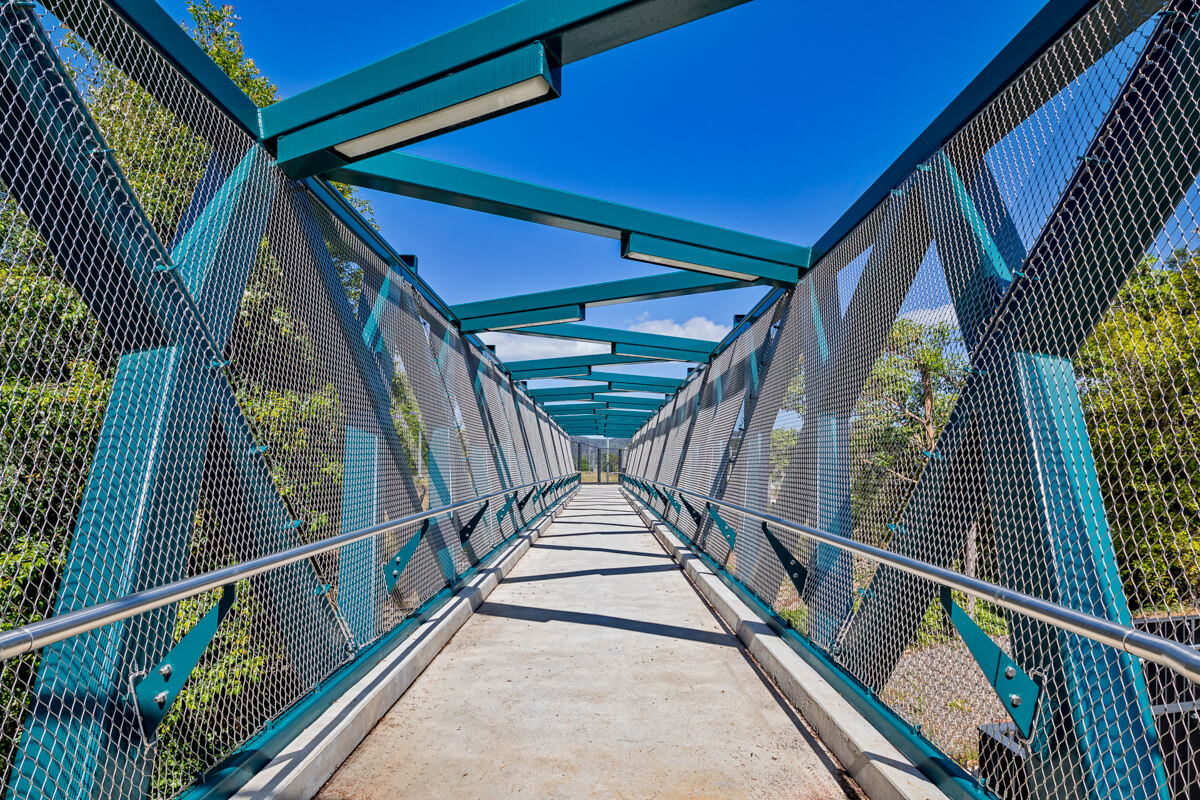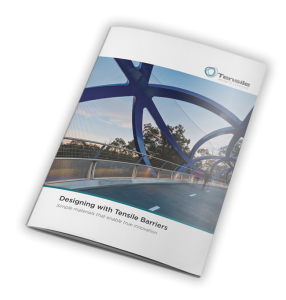At Tensile, our team is committed to creating eco-friendly barriers that contribute to greater sustainability in architecture.
This can be achieved by various means – including careful material selection, design factors and building methods. This approach can result not only in greater sustainability and lower emissions, but also higher efficiency and reduced costs.
Here’s how.
Materials for eco-friendly barriers
To build eco-friendly barriers, we use Jakob stainless steel materials such as Webnet mesh and wire-rope cables – which contain an average of 70% recycled content and are manufactured in facilities that operate on renewable energy. These materials can also be recycled again or repurposed after use.
But it’s not just the sustainability properties of the materials that counts. These materials are robust and offer excellent longevity. This means the quantity of material for the barrier project can usually be minimised – resulting in lower costs and reduced waste.
Ongoing maintenance is another factor. Jakob stainless steel materials can be used to create very low maintenance barriers, which can last several decades without too much interference. In turn, this saves on the costs associated with repairs, maintenance, and replacements.
Design and building method approaches
Tensile architecture tends to tread more lightly on the earth than solid construction, due to the use of lighter materials (and usually less of them), held together through tension rather than compression.
Tensile structures are often designed to allow in natural light, potentially saving on energy emissions and costs. This is certainly true of many stainless-steel tensile barriers.
The combination of lighter materials and tensile design for barriers enables faster construction. This saves on resources such as labour, transport, and energy costs.
In addition, for many of our barriers we utilise offsite pre-construction, which saves time, prevents disruptions on-site and makes for a very efficient build all round.

Project types and examples
We have installed many eco-friendly Webnet barriers for footbridges, educational facilities, and residential buildings.
Pedestrian and cycle bridges
At Emu Plains station in Sydney’s far west, we installed a fall-protection Webnet barrier for a steel pedestrian bridge that crosses the main highway. For the barrier, we used 40mm aperture Webnet that spans the entire height of the bridge to maximise safety and reduce the risk of climbing.
We were also able to help reduce installation time and reduce disruptions by pre-installing the mesh to the bridge off-site.
Educational buildings
A lot of schools and tertiary colleges these days are multi-storey, which means they require strong barriers for fall protection. But other factors such as airflow, natural light, access to views, sustainability and complementing existing design features need to be considered as well.
At Inner Sydney High, we installed barriers for outdoor terraces over seven levels and for the sports courts – including one on the rooftop. This project involved the use of a lot of Webnet, which had to be rated for large crowds.
The finished barriers are not only made from sustainable materials but also allow for views over the city and plenty of natural light. We worked closely with the building architects to ensure the barriers fitted with their design goals as well.
Residential apartments
The Nightingale ParkLife building in Melbourne required open-air barriers for the common areas and apartment balconies.
For this project, we used both Webnet mesh and wire-rope cables – mesh for the common areas and vertical cables for balcony green-facades. The use of these materials plus the design of the barriers helps complement the sustainability focus of the building.
There are plenty more ways that Jakob sustainable materials can be used to create eco-friendly barriers. Check out our project page for examples or give us a call.







































